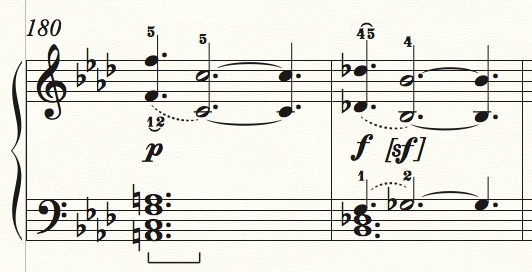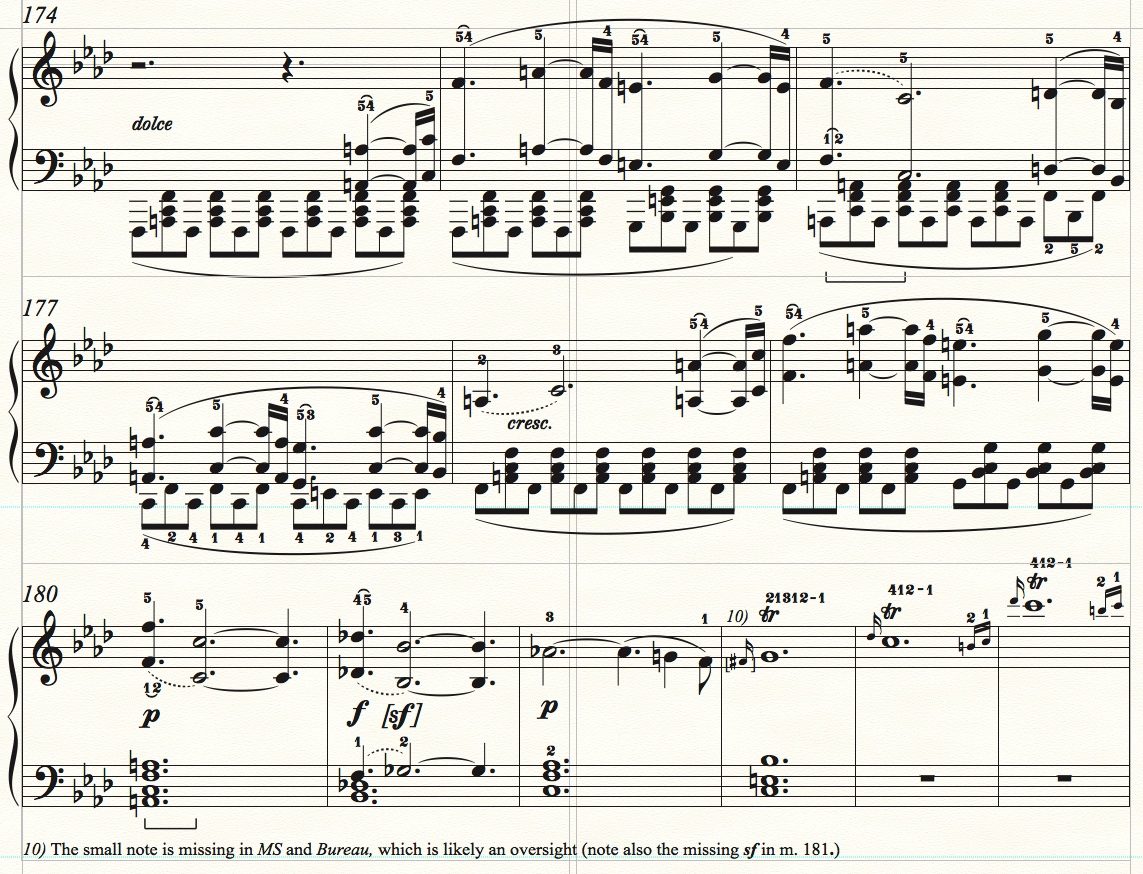Page 1 of 1
Beethoven brainteaser
Posted: 15 May 2022, 18:21
by John Ruggero
The first movement of his piano sonata op. 57, Beethoven writes:

- Beethoven op 57.jpeg (63.67 KiB) Viewed 1758 times
Why did he break the rule for showing the center of the measure? And how does this affect the way in which the two measures are played?
Re: Beethoven brainteaser
Posted: 18 May 2022, 13:29
by benwiggy
This is 12/8, presumably? Does it match a syncopated pattern elsewhere in the score?
Re: Beethoven brainteaser
Posted: 18 May 2022, 13:52
by tisimst
I'm no expert, so this is just a guess, but could it be because the remainder of each measure is simply ties and nothing more? By comparison, there's no need to show the center of the measure for the dotted whole note in the first measure. Is this an appropriate exception?
Re: Beethoven brainteaser
Posted: 18 May 2022, 14:26
by John Ruggero
benwiggy wrote: ↑18 May 2022, 13:29
This is 12/8, presumably? Does it match a syncopated pattern elsewhere in the score?
That's it. Impressive intuition since you didn't look at the rest of the piece. Here is what comes before:

- Beethoven op 57.1.jpeg (470.1 KiB) Viewed 1655 times
Beethoven had to maintain the dotted quarter note/dotted half note syncopated motive visually, which is just another demonstration of his notational sensitivity. One wonders what he would have done if the passage were in 4/4 and triplets. Tie a half note to a quarter note?
tisimst wrote: ↑18 May 2022, 13:52
I'm no expert, so this is just a guess, but could it be because the remainder of each measure is simply ties and nothing more? By comparison, there's no need to show the center of the measure for the dotted whole note in the first measure. Is this an appropriate exception?
In 4/4 we would normally write a quarter note and dotted half note in the right hand and a whole note in the left hand as "exceptions" to the rule. In 12/8 it would be a dotted quarter note and then a dotted quarter note tied to a dotted half note since there would usually be no reason
not to show the center of the measure. In this case, there was a very important reason to make an exception to show that the feeling of syncopation continues on from the preceding music, especially since the accompaniment suddenly stops moving in eighth notes.